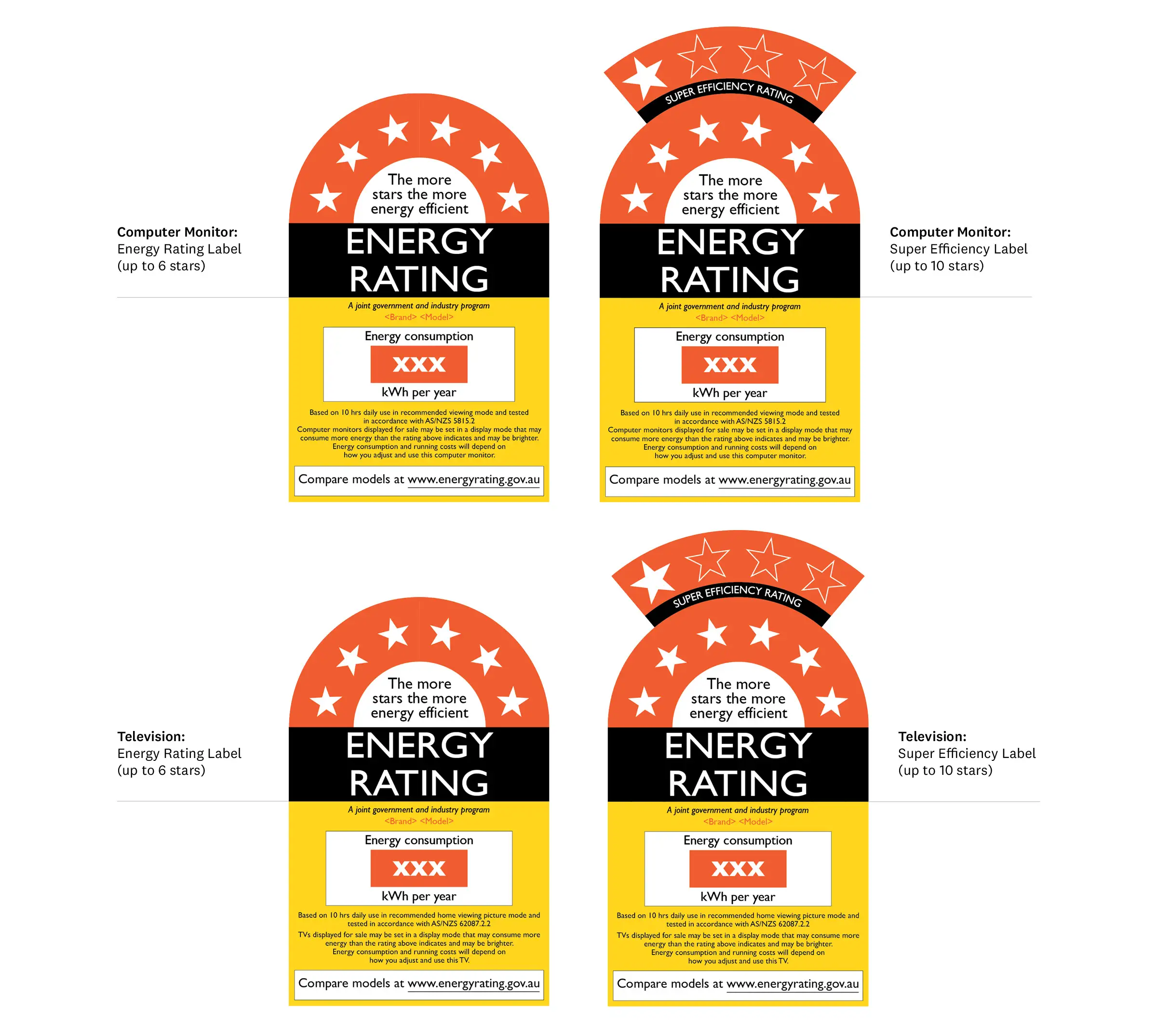Energy Rating Labels
It is a requirement that televisions and most computer monitors have an Energy Rating Label supplied with them and displayed on the product in stores.
The Energy Rating Label shows how much energy a television or computer monitor uses per year and provides a star rating that can be used to compare its energy efficiency with other televisions or monitors of the same size.
What's on the label
- A star rating of up to 10 stars
- Brand name and model number
- The annual energy consumption (in kWh per year)
- The test standard used and assumed usage of 10 hours per day (14 hours standby)
How efficiency ratings are calculated
The annual energy consumption and star rating of a television or computer monitor is calculated assuming that it is on for 10 hours a day, and in standby for 14 hours. It is also assumed that the television or computer monitor is in the recommended ‘home viewing’ mode.
Televisions currently on the market generally display a star rating between 1 and 8 stars, while computer monitors generally display a star rating between 1 and 9 stars. There is a 20% energy consumption reduction with each additional star.
- Televisions are tested using AS/NZS 62087.1:2010 and rated using AS/NZS 62087.2.2:2011 + A1 + A2
- Computer monitors are tested using AS/NZS 5815.1:2012 and rated using AS/NZS 5815.2:2013 + A1 + A2.
Energy Rating Label variants
The Energy Rating Labels for televisions and computer monitors each have two different variants depending on the product’s energy efficiency.
The maximum star rating a television or computer monitor can achieve is 10 stars. Products typically display a star rating of up to 6 stars. Products with a star rating greater than 6 stars show a crown with up to an additional 4 stars (maximum total of 10 stars) and the words “super efficiency”.
The star rating increases in half star increments up to 6 stars. From 6 to 10 stars, it increases in full star increments.



